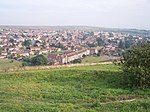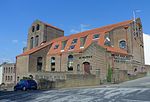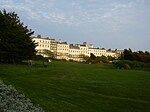Whitehawk Hill
Local Nature Reserves in East Sussex

Whitehawk Hill is a 50.3-hectare (124-acre) Local Nature Reserve in Brighton, East Sussex. It is owned and managed by Brighton and Hove City Council.At the top of the hill is Whitehawk Camp, a Neolithic causewayed enclosure which is a Scheduled Monument.This is species-rich chalk grassland which has views over Brighton and the sea, together with the Isle of Wight on clear days. There are colonies of chalkhill blue butterflies. The 45 metre high Whitehawk Hill transmitting station is at the summit.
Excerpt from the Wikipedia article Whitehawk Hill (License: CC BY-SA 3.0, Authors, Images).Whitehawk Hill
Warren Road, Brighton Whitehawk
Geographical coordinates (GPS) Address External links Nearby Places Show on map
Geographical coordinates (GPS)
| Latitude | Longitude |
|---|---|
| N 50.828 ° | E -0.11 ° |
Address
Whitehawk Hill Local Nature Reserve
Warren Road
BN2 3EA Brighton, Whitehawk
England, United Kingdom
Open on Google Maps











